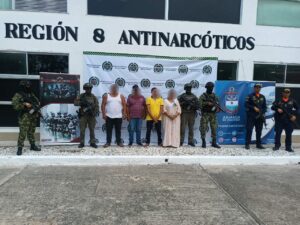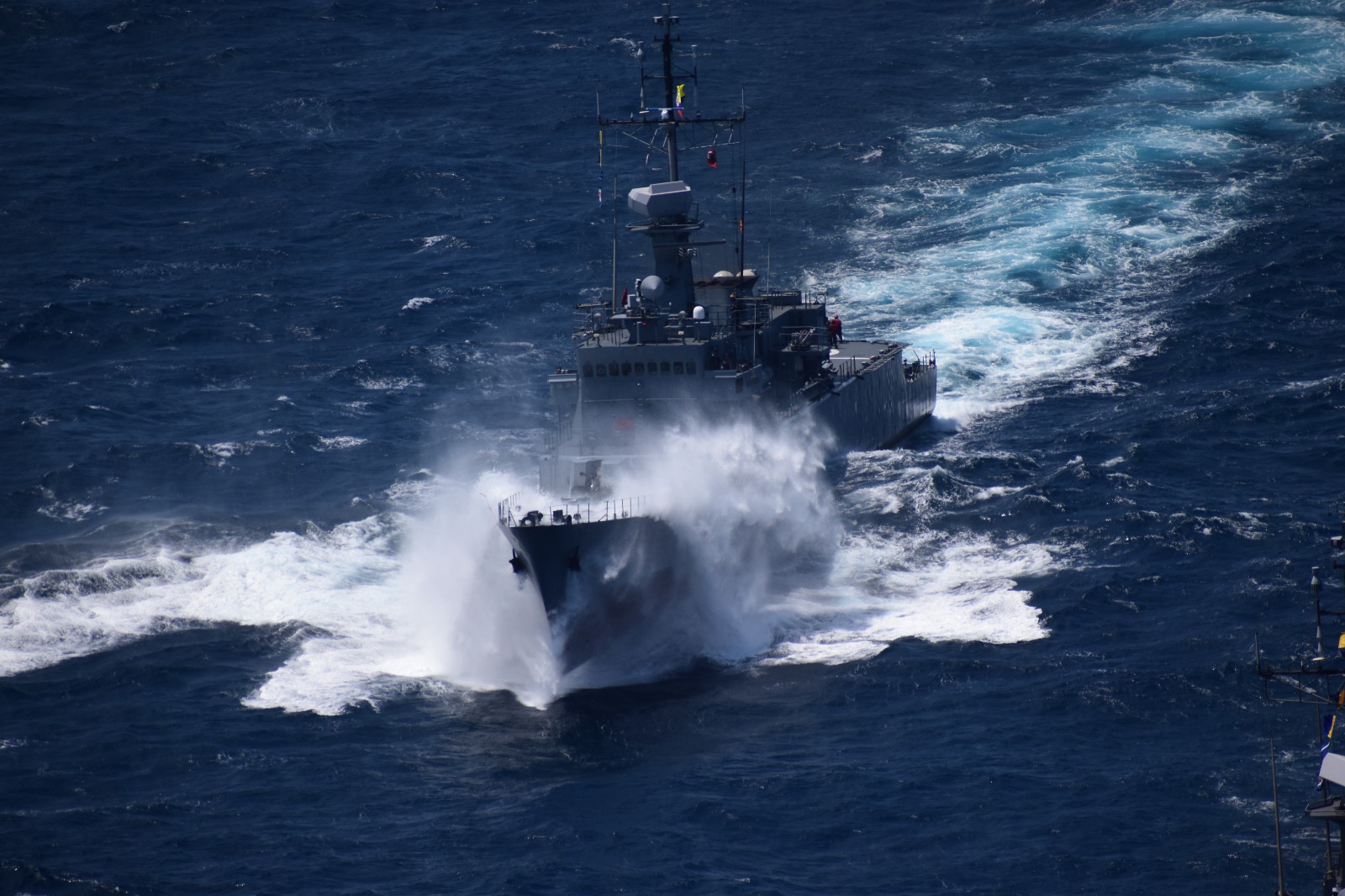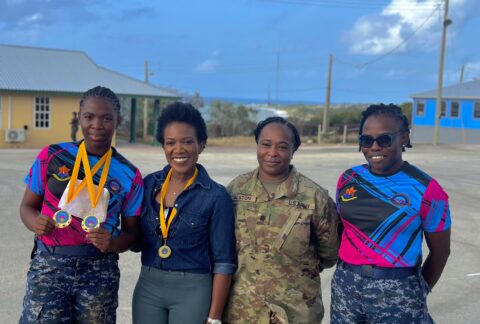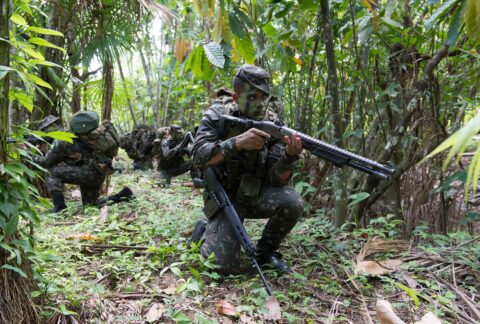The Colombian Navy continues to deal hard blows to narcotrafficking with the mid-July seizure of 261 tons of narcotics — 183 tons of cocaine, 58 tons of marijuana, and 20 tons of coca base paste. Its success is due to the dedication, training, and education of its teams and the support of partner countries.
“Of the total amount of illicit substances seized, 102 tons were achieved thanks to international cooperation with the United States, a fact that reaffirms the importance of the multinational effort,” Colombian Marine Corps Lieutenant Colonel Edgar Hernando Jaimes Gómez, head of Analysis of the Anti-Drug Directorate, told Diálogo.
“We are seizing almost 1 ton per day [of illicit substances], almost 30 tons per month, because the large volumes move by sea,” Colombian Marine Corps Brigadier General Rafael Olaya Quintero, permanent advisor for the Orion Naval Campaign, told Diálogo.

U.S. Navy Petty Officer Second Class Paul Seabolt)
Ninety percent of world trade is carried out by sea, a means that, in addition to being economical, allows for the movement of large volumes of cargo. Likewise, narcotrafficking and transnational crime use maritime routes. “More than 90 percent of narcotrafficking moves by sea, much of transnational crime also moves by sea. We are talking not only about drugs but also about illegal migration, a sensitive point today for the United States, and we are talking about arms trafficking and illegal fishing,” Brig. Gen. Olaya said.
As such, the Colombian Navy developed the Red Naval Plus strategy to fight drug trafficking with four components: intelligence, which seeks information to achieve results and provides inputs to the judicial bodies in charge of the processes; the International Maritime Research Center Against Drug Trafficking (CIMCON), which studies the narcotrafficking phenomenon from an academic viewpoint; the four naval forces (Caribbean, Pacific, East, and Amazon); and a coordinated effort with the Attorney General’s Office and the Financial Analysis Unit, to comprehensively attack the narcotrafficking value chain.
“We also want to dismantle the organization, as such, we get nothing out of seizing tons and tons, when we are not going toward the main source, which is financing,” Brig. Gen. Olaya said.
“This ongoing fight, not only at sea but also on land to counteract the transnational crime of narcotrafficking, has made it possible so far this year [as of July 11], to dismantle eight groups dedicated to narcotrafficking, five in the Caribbean and three in the Pacific,” Admiral Francisco Hernando Cubides Granados, commander of the Colombian Navy, told the press. “All this effort has allowed the capture of 384 people linked to the crime of narcotrafficking, of which 57 are part of the eight groups […], allowing to inherently affect the narcotrafficking phenomenon.”
Authorities are faced with multiple challenges in the fight against maritime narcotrafficking. For example, CIMCON conducted a characterization of the different findings and seizures of different psychotropic substances and narcotics and was able to identify 16 maritime narcotrafficking modalities (15 mobile and three stationary).

Facing the challenges
The Colombian Armed Forces work in an integrated manner through joint commands. “In a theater of operations we have units of the Army, the Colombian Air Force, the National Navy, the Police and we also link other State entities,” Lt. Col. Jaimes said.
Narcotrafficking is also being attacked through a multinational effort. “We maintain permanent communication with Joint Interagency Task Force South [JIATF South], with U.S. Southern Command for this permanent process of information exchange and it is materialized through JIATF South and through the U.S. Coast Guard, which is the operational link to comply with the agreement to suppress illicit narcotrafficking, so it is our permanent ally,” Lt. Col. Jaimes said.
An example of the multinational work in the fight against narcotrafficking is the Orion Naval Campaign, which is already in its 11th version. “We have joined efforts with 41 countries, 106 institutions, in a campaign that we develop twice a year, […] in order to deal more effectively with the various aspects of illicit narcotrafficking,” Brig. Gen. Olaya said.
“The challenges we have at the moment are to continue to grow in the application of operational development technology and increase our range of operational control, increase our means and capabilities,” said Lt. Col. Jaimes. “In the Caribbean scenario and Pacific scenario, where the greatest amount [of narcotrafficking] moves through, the great challenge is that, and to manage to drown transnational crime organizations in such a way that it is not profitable, that we manage to bring them to a point of bankruptcy where the seizures are greater than the probability of profit that they can get to have.”









